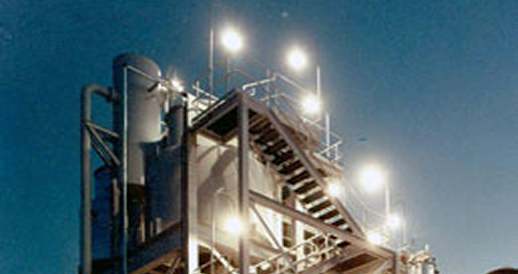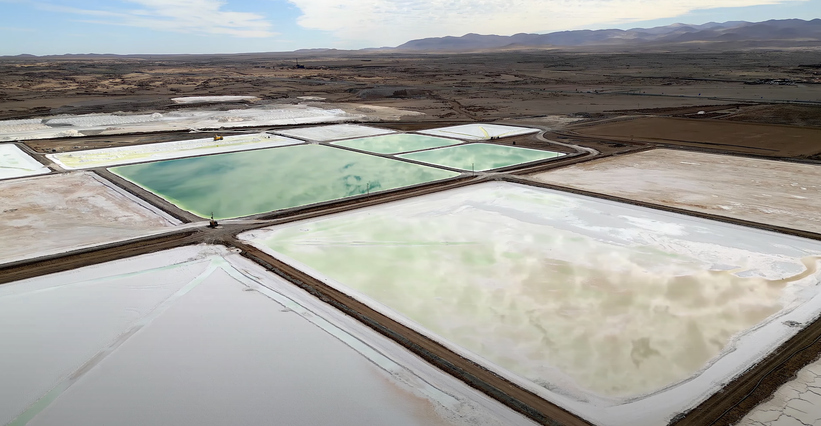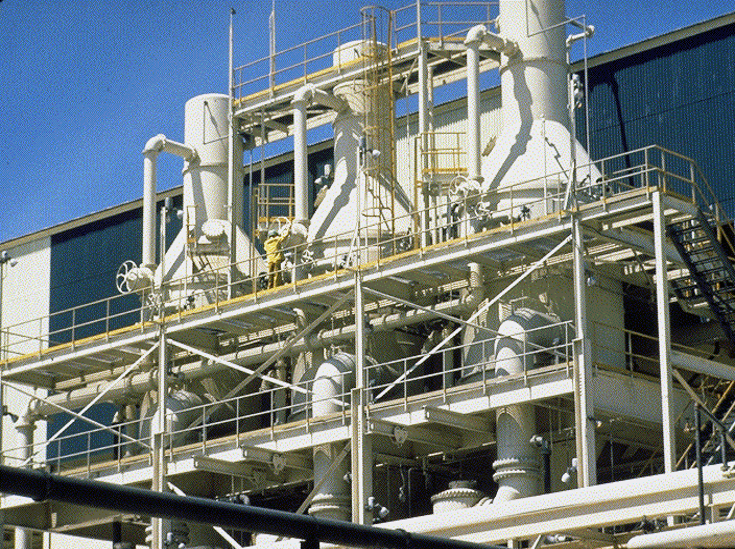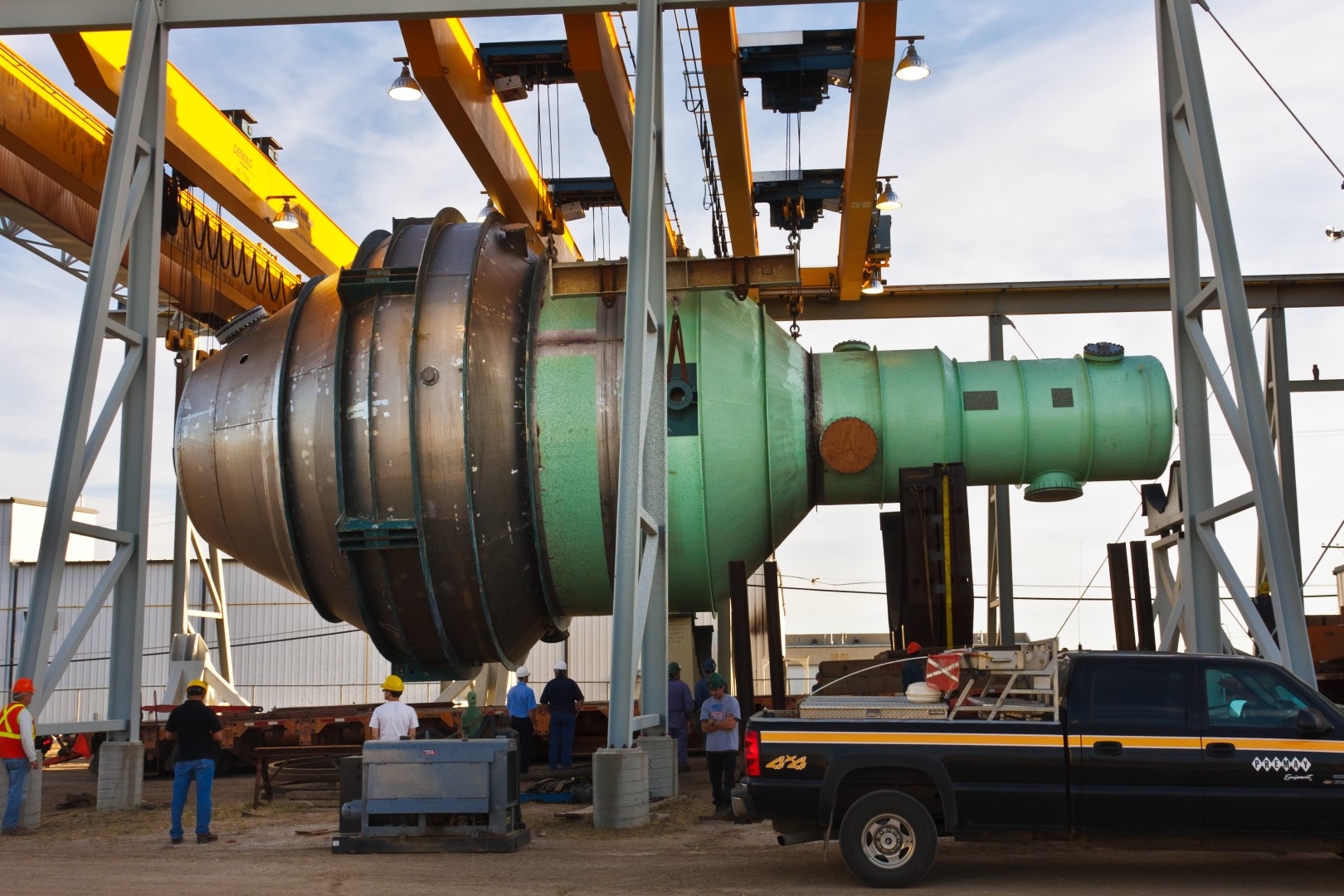Spodumene to LiCO/LiOH: Process Overview
Lithium from hard rock is primarily sourced from spodumene, a lithium-bearing mineral found in pegmatite deposits. Mining typically involves open-pit operations where ore is drilled, blasted, and hauled for further processing. Once extracted, the ore undergoes concentration to upgrade the lithium content. This typically involves crushing, grinding, and flotation techniques to produce a high-grade spodumene concentrate, often with a Li₂O content of 6–7%. Concentration is critical because it reduces the mass of material that must go through the more energy-intensive downstream refining stages.
Roast & Leach
Spodumene occurs naturally in an alpha (α) crystal form, which is very stable and not readily reactive. To make lithium accessible, the concentrate must be roasted at high temperatures (typically 1000–1100 °C). This thermal treatment transforms α-spodumene into the more reactive beta (β) form.
Once converted, the β-spodumene is subjected to acid leaching (often with sulfuric acid). The acid reacts with the lithium in the ore to produce soluble lithium sulfate. After neutralization and solution treatment, this intermediate can be further processed to create lithium carbonate (Li₂CO₃) or lithium hydroxide (LiOH).
Purification
After leaching, the solution contains lithium along with numerous impurities, including magnesium, calcium, sodium, and iron. These must be removed to achieve the purity levels required for downstream applications.
This is where the combined expertise of Whiting Equipment Canada and its licensee, Swenson Technology, becomes critical. Our systems are designed to isolate lithium while efficiently removing contaminants. Purification steps are carefully engineered, as each feed source—whether from hard rock, brine, or clay—has its own unique impurity profile. Properly managed, these processes enable reliable production of high-purity intermediates suitable for crystallization.
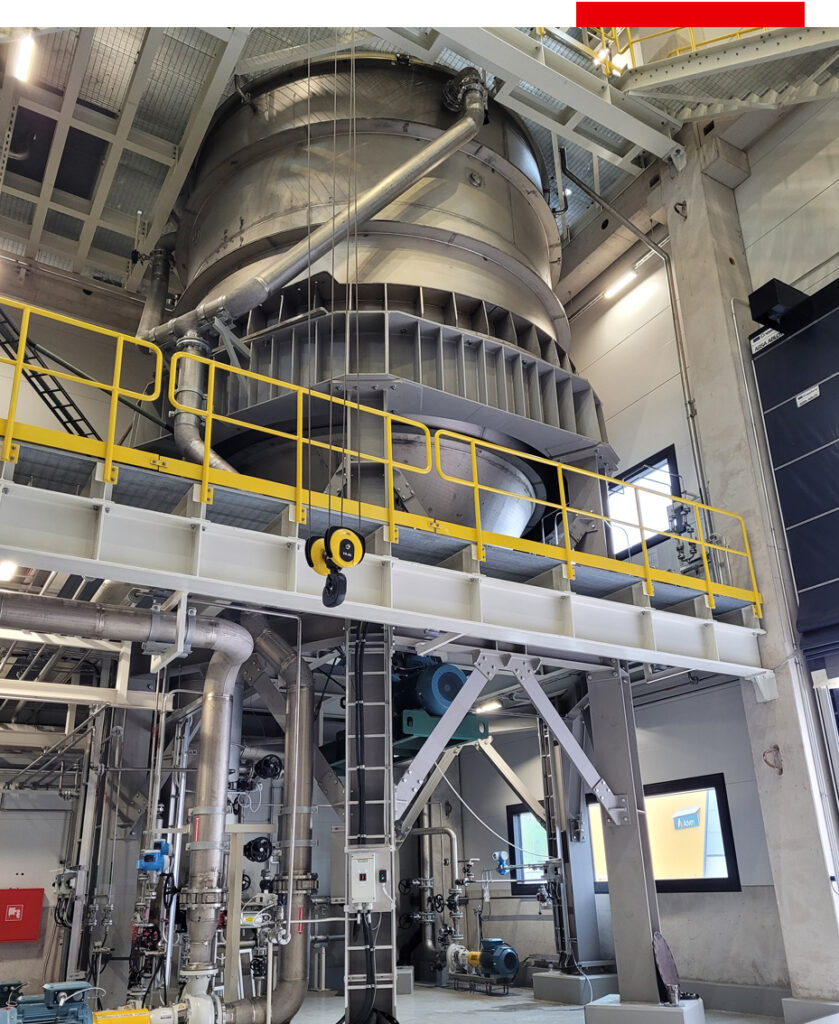
Crystallization
The heart of lithium refining is crystallization, which transforms dissolved lithium salts into solid, high-purity products. Innovative crystallizer designs, such as draft tube baffle (DTB) systems, forced circulation, and evaporative units, are employed to control the formation and growth of crystals.
By managing supersaturation and growth rates, Swenson crystallizers work to ensure that impurities remain in the solution (mother liquor) while pure lithium salts crystallize out. This level of control maximizes both yield and quality. Depending on market demand, operators can produce lithium carbonate (Li₂CO₃) or lithium hydroxide monohydrate (LiOH·H₂O). Both are essential in supplying the battery-grade chemicals required for energy storage and EV manufacturing.
QA & Specs
Meeting battery-grade specifications requires rigorous quality assurance at every stage of production. The refining process is supported by:
- Modeling and Simulation: Early-stage design tools that predict thermodynamic behavior and optimize process economics.
- Bench Testing: Laboratory-scale experiments that confirm proof of concept and collect data on yield, purity, and morphology.
- Pilot Testing: Intermediate-scale trials using crystallizers and evaporators to gather data on fouling tendencies, washing requirements, and centrifuge performance.
This staged approach results in a scenario where, by the time the plant reaches commercial scale, operators can consistently deliver lithium compounds that meet or exceed global purity standards.
Energy & Emissions
The spodumene route is energy-intensive, primarily due to the roasting step, which requires sustained high temperatures. Roasting contributes significantly to the carbon footprint of hard rock lithium refining. Acid leaching and neutralization also involve the use of chemical reagents and generate emissions associated with reagent production and use.
By comparison, brine-based processes often consume less direct thermal energy but may require longer residence times in evaporation ponds. For spodumene-based plants, energy-efficiency strategies—such as heat integration across evaporation and crystallization—can help offset energy costs while lowering operating costs.
Waste & By-Products
Processing spodumene generates several waste streams and by-products:
- Tailings: From the concentration stage, consisting of silicate minerals.
- Leach Residues: Insoluble solids left after acid treatment.
- Sulfate By-Products: Neutralization and purification can produce sodium or calcium sulfate streams. Swenson’s expertise includes handling sodium sulfate (Na₂SO₄), which can be recovered in crystalline form for resale rather than being treated solely as waste.
Responsible waste handling and opportunities for reuse or by-product valorization are increasingly important in meeting sustainability and ESG expectations.
Conclusion
The journey from spodumene ore to lithium carbonate or hydroxide involves multiple steps, each requiring precision engineering and robust quality control. Mining and concentration prepare the ore; roasting and leaching unlock the lithium; and purification ensures impurities are stripped away. At every stage, Whiting and Swenson’s expertise comes to the forefront, enabling you to deliver the high-purity products essential to today’s battery markets.
Whiting Equipment Canada, in conjunction with Swenson Technology, provides tailored crystallization and evaporation systems that turn spodumene feed into dependable, battery-grade lithium carbonate and hydroxide.
Ready to learn more? Let’s talk.

